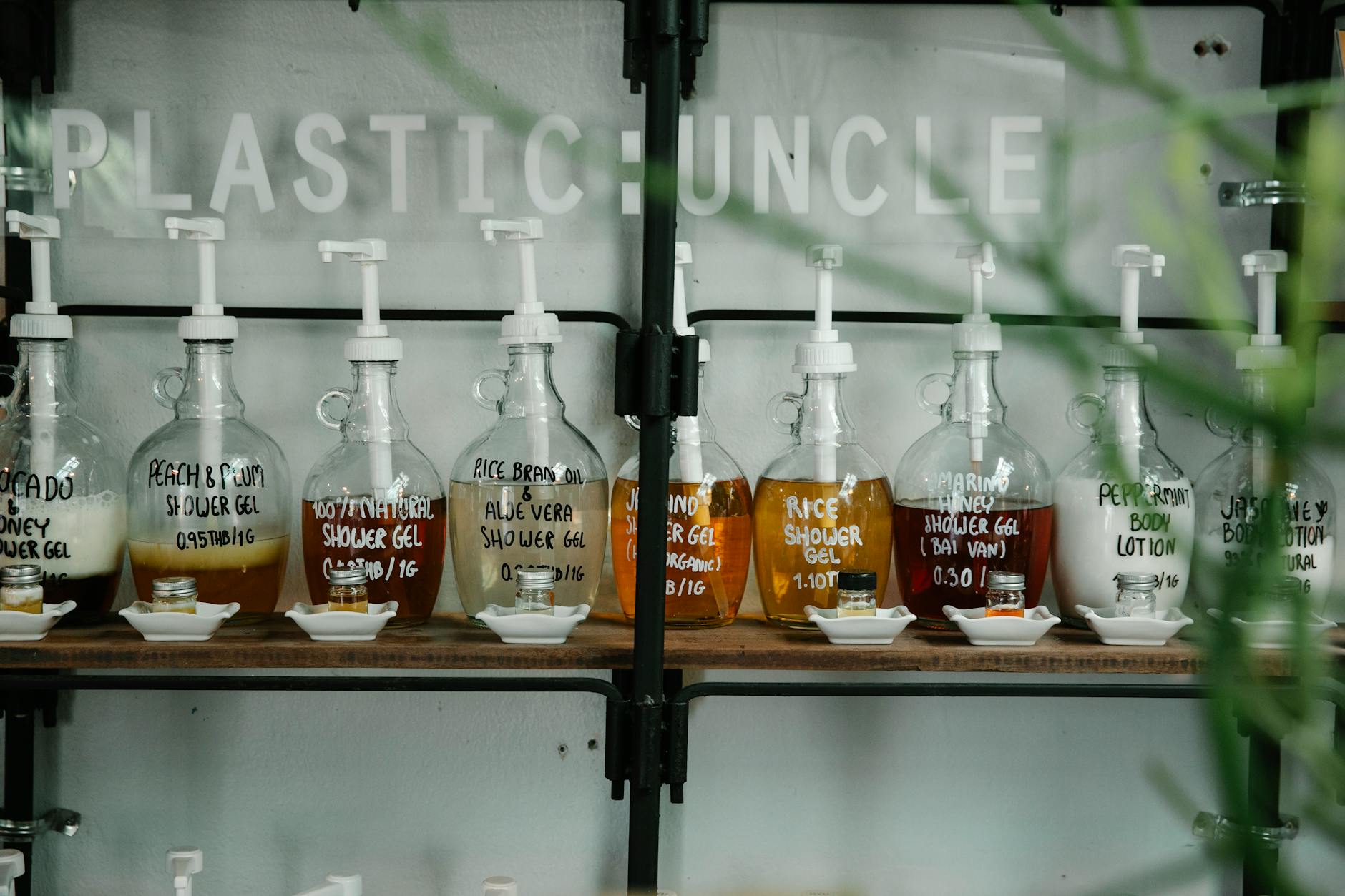Why Natural Sunscreens Are a Must for Australia's Environment

Understanding Natural Sunscreens
As someone who's spent countless sun-soaked afternoons at the Byron Bay Lighthouse, I've learned first-hand about the significance of natural sunscreen. Not only does it shield against harmful UV rays, but it also honours our planet by using eco-friendly ingredients. The appeal of these sunscreens lies in their simplicity—typically leaning on minerals like zinc oxide and titanium dioxide, which provide a physical barrier to the sun. These components are a fantastic choice for those of us who spend time under the Australian sun, aiming to protect our skin while preserving the environment.
Natural sunscreens are a boon for eco-conscious travellers like us who yearn to explore places like the Cape Byron Marine Park without contributing to environmental degradation. The absence of harmful chemicals ensures that they're not just gentle on our skin but also on marine ecosystems, a critical consideration for anyone aiming to protect our vibrant reefs and aquatic life.
Moreover, the benefits radiate beyond environmental impact. Natural sunscreens are generally less irritating, making them well-suited for sensitive skin, even for babies requiring baby sunscreen. Their lack of synthetic fragrances and preservatives reduces the risk of allergic reactions and skin irritations, offering peace of mind as you journey through natural landscapes.
Using natural sunscreens means making a choice that aligns with sustainable living, offering both personal health benefits and a step towards environmental stewardship.
Australia’s Unique Environment
Harsh UV Levels
Australia's radiant sun, while beautiful, can be intense, especially with the country's high UV levels. As someone passionate about eco-conscious travel, I am always reminded of the importance of protecting my skin without harming our planet. In Australia, the UV index can reach dangerous levels, making it crucial to choose the right kids sunscreen for those family beach days or outdoor hikes. This is not just about minimising exposure but ensuring that every adventure, whether at Cape Byron Marine Park or beyond, is safe and sustainable.
Diverse Ecosystems
Australia's incredible biodiversity is something I deeply cherish. From the lush rainforests to the vast deserts, each ecosystem demands unique conservation strategies. It's not just the sprawling landscapes that are precious, but the intricate web of life within them. As advocates for sustainable tourism, we must tread lightly, ensuring our presence doesn't disrupt these delicate systems. Practices like using eco-friendly products and engaging in responsible travel habits can make a big difference.
Reef Safety Concerns
Given the significance of the Great Barrier Reef and other marine ecosystems, reef safety is a paramount concern for eco-conscious travellers. Harmful chemicals in some sunscreens have been shown to damage coral reefs, which is why I always opt for reef-safe and environmentally friendly options. The precious marine life in Australia deserves our protection, and by making informed product choices, we align our travel practices with our commitment to the environment.
Choosing the Right Sunscreen
Ingredients to Look For
Selecting a sunscreen isn’t just about SPF; it’s about what’s inside that counts. Key ingredients to hunt for include zinc oxide and titanium dioxide, both known to physically block harmful sun rays. These components are not only effective but also environmentally friendly, reducing the chemical footprint often left by conventional sunscreens. Using products labelled as reef safe sunscreen ensures you’re protecting vulnerable marine ecosystems, which are at risk from harmful chemical compounds found in many sun protection products. Opt for formulations free from oxybenzone and octinoxate, notorious for contributing to coral bleaching.
SPF and Outdoor Activities
When venturing out into the Australian sun, you’ll want a sunscreen with a minimum SPF of 30 for everyday activities like visiting the Byron Bay Lighthouse or exploring Cape Byron Marine Park. Meanwhile, adventurers engaging in more intense outdoor activities should consider a higher SPF for better protection. Always remember that sunscreen is just one part of your shield; wearing a hat, sunglasses, and protective clothing complements your efforts.
Eco-Certifications
Eco-certifications are an important consideration when choosing a sunscreen that aligns with sustainable practices. Keep an eye out for certifications that indicate organic or natural ingredient usage, sustainable manufacturing processes, and ethical sourcing. Such certifications help ensure you’re making a choice that benefits both your skin and the planet. By highlighting these eco-friendly travel tips, we can empower others to make better choices that support our beautiful natural environments.
Best Practices for Usage
Proper Application Techniques
As someone committed to eco-friendly travel, one step you shouldn't skip is ensuring proper application of your sunscreen, especially if it's a zinc sunscreen. Start by applying a generous amount, about a teaspoon's worth for your face and each limb. Spread it evenly using circular motions until it's fully absorbed. Zinc Sunscreens are often thicker, so taking the time to blend them well ensures optimum coverage. This technique is particularly beneficial for long hikes and outdoor activities where sun exposure is prolonged.
Reapplication Frequency
Remember, even the most environmentally-conscious products need reapplication to serve you best. Generally, zinc sunscreen should be reapplied every two hours, or more frequently if you're swimming or sweating. Reliable protection while you explore places like national parks or scenic hiking trails ensures better skin health and aligns with sustainable practices, a key focus when documenting your travel adventures. This simple routine keeps your skin safeguarded without leaving a harmful footprint behind.
Storage Tips for Durability
To preserve the efficacy of your sunscreen, storing it correctly is essential. Keep it in a cool, dry place, away from direct sunlight. Extreme temperatures can degrade its effectiveness, leaving you unprotected during your eco-escapades. An insulated pouch is an excellent investment, especially if you spend a lot of time in outdoor environments. By following these eco-friendly travel tips, you ensure that your sunscreen remains a reliable companion throughout your journeys.
Avoid Mistakes with Eco-Friendly Sunscreens
Mindful Ingredient Review
While some might skip over those tiny print labels, it's crucial to dive into ingredient lists carefully. Natural sunscreens often include eco-friendly additives, which protect both our skin and the environment around places like the Byron Bay Lighthouse. Ensure the ingredients are reef-safe, as many chemical options can harm sensitive marine ecosystems, such as those in the nearby Cape Byron Marine Park. By seeking formulations free from oxybenzone and octinoxate, we are prioritising marine protection and promoting sustainable tourism.
Consistency is Key
Applying sunscreen only once during a day basking under Byron Bay's radiant sun isn't sufficient. I often remind travellers of the need for diligent and frequent application, particularly after swimming or sweating, to fortify our skin against harsh UV levels. Remembering to reapply empowers us with the assurance of full protection while enjoying all those eco-friendly travel adventures.
Aligning SPF Needs with Activities
Navigating the SPF spectrum can be tricky. If you're spending the day exploring the vibrant local markets in Bangalow, a moderate SPF might suffice. However, if you plan to hike or leisurely bike along the Cape Byron tracks, consider reapplying a higher SPF for extended outdoor activities. This nuance in choice helps us remain protected whilst embracing sustainable practices, ensuring that we leave only footprints and take only memories from our beautiful environments.
By keeping these eco-friendly travel tips in mind, you're not just protecting yourself but are also preserving the beauty of our cherished natural sites for future generations.


